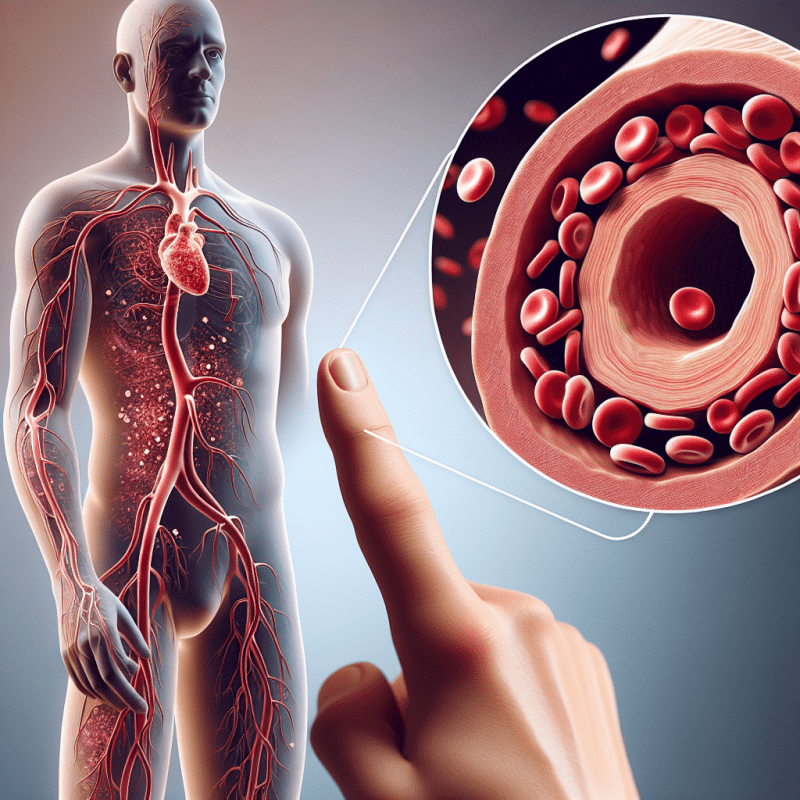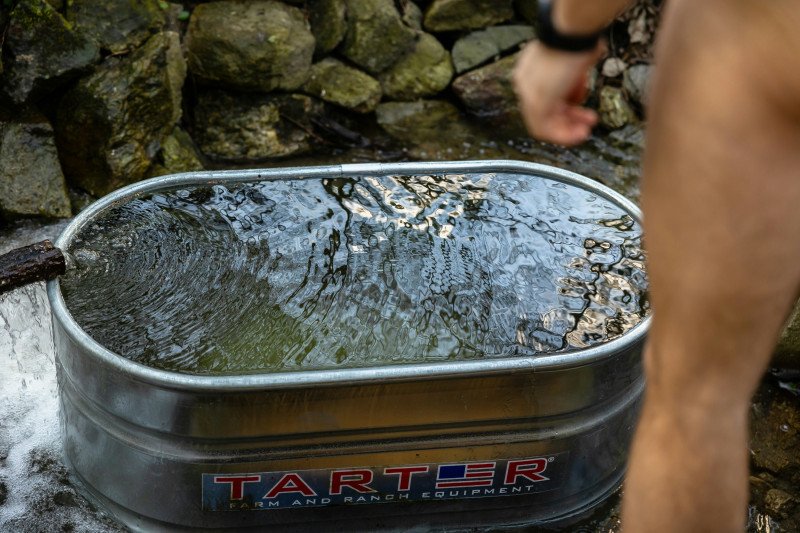What is cold-induced vasodilation?

Vasodilation is when your blood vessels widen (dilate) after they’ve been narrowed (vasoconstriction) in response to the cold. This physiological process is also known as cold-induced vasodilation (CIVD) and it’s there to help you keep a steady temperature. CIVD also protects your extremities, such as fingers, toes, nose, and ears, from frostbite and other cold-related injuries. Together with a renewed cycle of vasoconstriction, vasodilation participates in the Hunting Response.
Understanding CIVD is essential for anyone interested in health, wellness, and any type of cold therapy. By knowing how CIVD works, you’ll also be able to understand what happens to you when you take an ice bath. Keep on reading to find out more!

Physiology Behind Cold-Induced Vasodilation
When your body is exposed to cold temperatures, the blood vessels in your toes, fingers, nose, and ears will constrict (vasoconstriction) to minimize heat loss. Your blood will then be redirected to your core to keep your internal organs warm. This process causes your skin’s temperature to decrease.
After a few moments, your blood vessels will expand (dilate) again, supplying warm blood back to your extremities to keep them at a healthy temperature. This piece of the process causes your skin’s temperature to increase and is called cold-induced vasodilation (CIVD) (1).
This cyclical process is also known as the Hunting Response or Lewis Hunting Reaction. It helps prevent tissue damage to your extremities and maintains functionality in cold conditions and environments.
To understand the Hunting Response more, read our other articles:
Vasodilation – Cold or Hot?
We’ve so far learned that vasodilation happens when we’re cold, and it helps us keep a steady core temperature while preventing injuries. However, vasodilation, or vasoconstriction for that matter, is not an overly strict process. They are there to cycle around as our body needs, with this interchange between them being called the Hunting Response (2).
Generally speaking, vasodilation occurs when you’re cold, and vasoconstriction when you’re hot. However, these two are not mutually exclusive and will switch back and forth to regulate a steady blood flow to all areas of your body.
Sometimes it’s easier to visualize these complicated physiological mechanisms that our bodies go through. Have a look at this informational video on vasodilation and vasoconstriction:
Factors Influencing CIVD
Not everyone experiences CIVD, or the Hunting Response as a whole, in the same way. Factors such as age, gender, and overall health can influence the effectiveness of this response.
For example, younger people and those with stronger cardiovascular health tend to have a more robust CIVD response. This is great for outdoor enthusiasts and winter athletes who frequently face cold environments and have to adapt quickly.
On the other hand, if you get used to cold environments, that can strengthen your CIVD response. Repeated exposure to cold conditions can train your body to respond more efficiently, improving blood flow to the extremities and reducing the risk of cold-related injuries. This adaptation is particularly beneficial for individuals who live in or frequently visit cold environments.
Practical Implications and Real-World Applications
For those who enjoy outdoor winter activities like hiking, skiing, or mountaineering, it is important to understand CIVD and the Hunting Response. Recognizing the signs of effective vasodilation (and vasoconstriction) can prevent frostbite and other cold-related injuries.
You will know that you’re experiencing a healthy dose of the Hunting Response via these factors:
- Color changes: The skin alternates between pale/cold and red/flushed, indicating vasoconstriction followed by vasodilation.
- Temperature changes: Extremities may feel cold, followed by temporary warmth as blood flow increases during vasodilation.
- Regular cycles: These vasodilation phases happen intermittently, typically every 5-10 minutes.
You can also feel when the blood flow intensifies in your extremities because they will lightly tingle. Prolonged vasoconstriction without vasodilation (continuously cold and pale skin) may mean that your hunting response is not working properly and that you could be under an increased risk of frostbite.

Health Benefits of Vasodilation
CIVD may have even broader health implications. Improved blood flow and circulation can benefit your overall cardiovascular health. Some studies even suggest that controlled cold exposure could be used therapeutically to enhance blood circulation (3). This makes CIVD a topic of interest not only for outdoor enthusiasts but also for those seeking to optimize their overall health and wellness, especially for those practicing cold therapy.
This reaction is also important in understanding certain health conditions, like Raynaud’s disease (4). This is a disorder by which blood circulation is impaired in response to cold or stress.
The hunting response also plays a key role in cold water immersion therapy and cryotherapy. This brief exposure to extreme cold can help treat various health conditions by enhancing recovery after exercising and boosting your overall health and wellness.
There are many more therapeutic effects of cold therapy. Read all about them in our articles:
- Uncover the Unique Ice Bath Advantages for Health & Recovery
- Explore the Top Cryotherapy Benefits for Health and Wellness
- Discover the Top Cold Plunge Benefits for Health and Wellness
Wrapping Up
CIVD or cold-induced vasodilation is a powerful example of our body’s ability to adapt to environmental challenges. It is also a key component of the hunting response, which is how our body reacts and adapts to the cold.
By understanding the factors that drive this response we can better prepare ourselves for and thrive in cold environments. This is especially important if you like to practice cold-induced therapy, in the form of ice or cold baths.
Literature sources
- Flouris AD, Westwood DA, Mekjavic IB, Cheung SS. Effect of body temperature on cold induced vasodilation. Eur J Appl Physiol. 2008 Oct;104(3):491-9. doi: 10.1007/s00421-008-0798-3. Epub 2008 Jun 21. PMID: 18568361.
- Daanen HA, Van de Linde FJ, Romet TT, Ducharme MB. The effect of body temperature on the hunting response of the middle finger skin temperature. Eur J Appl Physiol Occup Physiol. 1997;76(6):538-43. doi: 10.1007/s004210050287. PMID: 9404866.
- Esperland D, de Weerd L, Mercer JB. Health effects of voluntary exposure to cold water – a continuing subject of debate. Int J Circumpolar Health. 2022 Dec;81(1):2111789. doi: 10.1080/22423982.2022.2111789. PMID: 36137565; PMCID: PMC9518606.
- Haque A, Hughes M. Raynaud’s phenomenon. Clin Med (Lond). 2020 Nov;20(6):580-587. doi: 10.7861/clinmed.2020-0754. PMID: 33199324; PMCID: PMC7687329.


